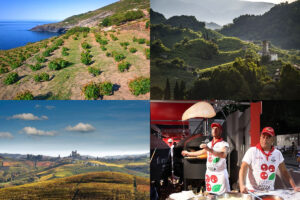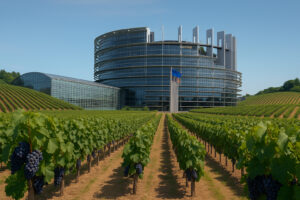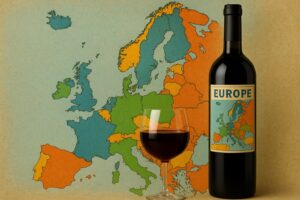It almost never ends up in the spotlight, yet Canada, a placid, boundless country supported by a solid economy, has become an essential market for Italian wine, where, in the first 7 months of 2021, it exported bottles worth 209.4 million Euros (10.6% over the same period in 2020, ISTAT data analyzed by WineNews). A figure that is not surprising, especially if we look back to 2020. In the year of the pandemic, as a Wine Intelligence analysis recalls, the wine market in Canada grew by 5% for still wines and 4% for sparkling wines over 2019, according to Iwsr data. The reasons are quite simple: despite the global crisis, in fact, the Canadian economy has shown itself to be extraordinarily resilient, job losses have been contained, and household incomes - with restaurants closed and the impossibility of traveling, an absolutely significant item of expenditure - have grown by 9.95%. Money that, as you can imagine, has remained in the pockets of Canadians, with very little opportunity to spend it.
One of these possibilities is wine. Starting with local wine, a niche but high quality product, capable of fetching much higher average prices than imported wine. These purchases have been made entirely by retailers under the aegis of the State, such as the Lcbo - Liquor Control Board of Ontario, supermarkets, independent liquor shops (in British Columbia and Alberta) and e-commerce, which exploded here too during the lockdown months and was chosen by 14% of wine drinkers. This positive trend, however, has to contend with an important change in the wine consumer landscape. In some segments, restrictions on socialising and eating out, combined with greater economic resources, have led to a doubling of wine consumption, but others have instead decided to move on to spirits and beer, a contrast that emerged from “Canada Portraits”, an analysis of Canadian wine consumers, also by Wine Intelligence.
These are the categories of “Engaged Explorers” and “Enthusiastic Treaters”, who numerically represent 18% of consumers, but on whom 40% of wine expenditure depends. In a sense, the restrictions of the Covid-19 era have brought about new opportunities for wine consumption. After an initial surge in lunchtime wine consumption, this habit has slowed down, and instead, consumers seem to be anticipating the mythical (and very British) “Wine O’Clock” in the late afternoon. Obviously, off-premise purchases have flown, but so have average prices per bottle, while consumption occasions, especially among “Engaged Explorers” have remained more or less the same. On the contrary, among the “Mainstream Suburbanites”, the archetypal average Canadian drinker, consumption occasions also increased, especially away from meals, but not the average price of the bottles of wine purchased.
However, it is among younger consumers, those less connected to wine and its world, that the impact of the pandemic has been most negative: the segment that represents the future of wine in Canada - the Social Newbies - has shrunk from representing a quarter of regular Canadian wine drinkers in 2018, to a fifth in 2021. On the one hand, there is a demographic problem, as the aging population also weighs on the profile of the average wine drinker; on the other, the lack of moments of sharing and socializing has proved to be a decidedly negative factor, pushing many towards the consumption of beer and hard seltzer. Finally, the least connected to wine consumption, the “Kitchen Casuals”, have grown as a group of consumers, rising from 22% in 2018 to 29% in 2021: they are older consumers, with low incomes, whose relationship with wine is essentially cold, linked to a few social situations that “require” it.
In summary, Wine Intelligence’s analysis concludes, wine in Canada has had a good 2020 and is having a good 2021, with a wide swath of consumers coming out during these 18 months of restrictions exploring different types and increasingly expensive labels. The other side of the coin, as we have seen, is that the more marginal consumer groups have moved away from wine consumption over the same period, jumping into other things. With the return to a normal model of socialization, pre-pandemic habits will also return, including a certain reluctance to pay large sums of money for wines which, consumed at home, cost considerably less. Perhaps the long-term consideration is the loss of younger consumers. With many of their choices - including moderating or avoiding alcohol altogether - young people in Canada were already proving to be a difficult market for wine before 2020, and the pandemic seems to have accelerated that trend. The key to bringing them back on track may lie in the efforts wine is making to connect with the issues affecting young people, and thus focusing on sustainability, organic and “better-for-you” products, low-alcohol wines and single-serve packaging.
Copyright © 2000/2025
Contatti: info@winenews.it
Seguici anche su Twitter: @WineNewsIt
Seguici anche su Facebook: @winenewsit
Questo articolo è tratto dall'archivio di WineNews - Tutti i diritti riservati - Copyright © 2000/2025









































































































































































































